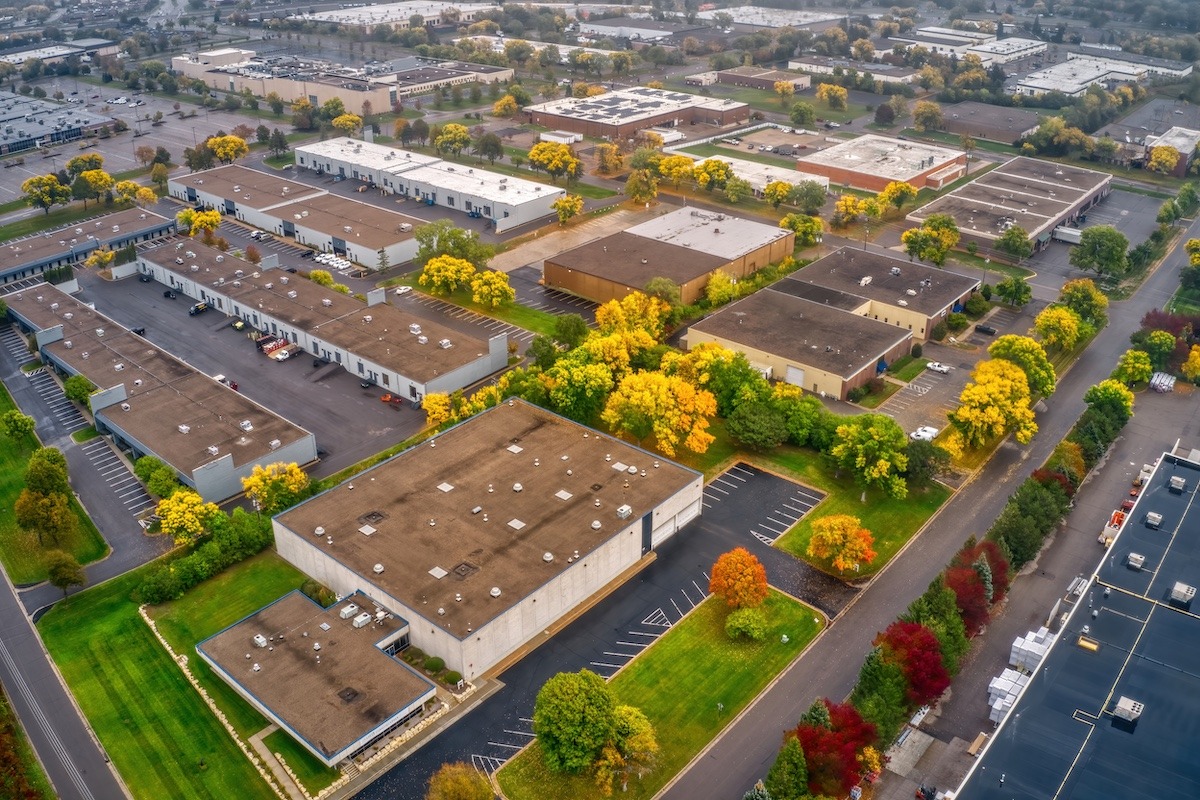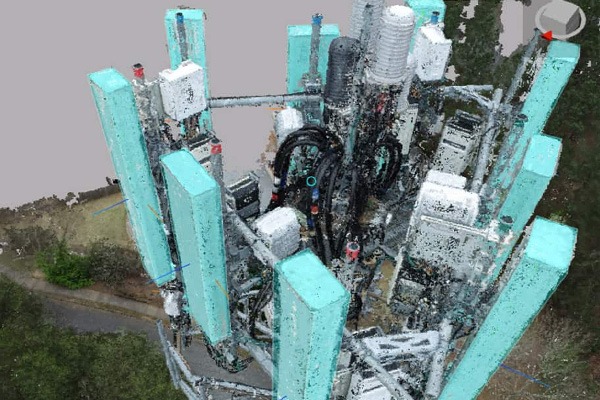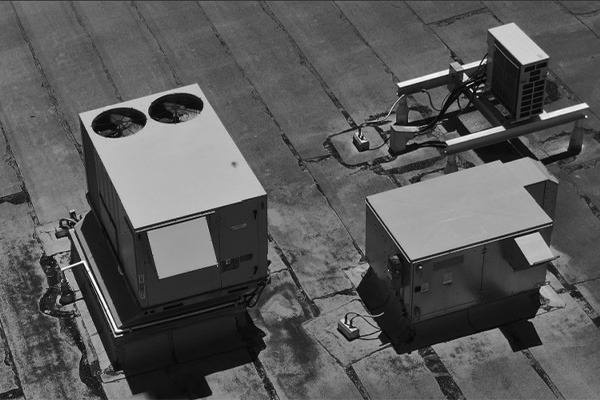Digital Inspections & 3D Modeling Case Study for Multi-Property Preventative Maintenance
Managing multiple properties can be daunting for property owners and property managers. Each building has unique maintenance needs, from minor repairs to large-scale renovations. Facades and roofs are the most exposed elements, constantly enduring weather conditions, temperature fluctuations, and wear and tear.
Digital inspections powered by drones, 3D modeling, and AI-driven analytics have become invaluable tools for property management teams who manage multiple properties over a vast geographic area. By adopting this technology, they can improve operational efficiency, reduce costs, enhance safety, and extend the lifespan of their buildings.
The Complexity of Managing Multiple Properties
Property management teams with multiple assets face logistical challenges in maintaining buildings consistently. Different regions experience varying weather conditions, regulations, and tenant demands. For instance, properties located in areas prone to hurricanes may require more frequent roof inspections, while buildings in colder climates like the Northeast may see accelerated wear and tear due to ice and snow. Managing these diverse needs is time-consuming, expensive, and often requires the coordination of several vendors and inspection teams.
The traditional approach to inspecting roofs and facades involves manual inspections, which are labor-intensive and require specialized expertise. Property managers must pay for truck rolls or other travel expenses to perform inspections, especially in remote or hard-to-reach locations. This process not only incurs significant costs but can also result in inconsistent reporting and delays in maintenance decision-making.
The Shift to Digital Inspections
Digital inspections using drones and 3D modeling technologies have revolutionized the way property owners can maintain their portfolios. With the help of drones, high-resolution cameras, thermal sensors, and AI-driven software, property owners can conduct more frequent, accurate, and cost-effective inspections. These technologies are especially advantageous for large-scale property portfolios where consistent monitoring is critical for long-term success.
A 2023 report from MarketsandMarkets revealed that the global drone inspection market is expected to grow from $8.5 billion in 2021 to $22.5 billion by 2026, driven by the increasing demand for safe, efficient, and precise data collection across various industries, including real estate and property management.
Key Benefits of Digital Inspections for Property Managers with Multiple Properties
-
Scalability & Consistency Across Multiple Locations
Managing properties demands scalable solutions that can offer consistency regardless of location. Digital inspections provide consistency by offering a standardized process that can be replicated at each site. Using drones and AI-powered platforms, property owners can inspect multiple properties from a single location, ensuring that every building receives the same level of scrutiny, regardless of its geographical location.
This scalability also extends to large properties or multi-building campuses. With drones, property managers can inspect the facades and roofs of multiple structures in a single day, reducing the need for multiple inspection teams. According to the Association for Unmanned Vehicle Systems International (AUVSI), drone inspections can reduce the time spent on large-scale property assessments by up to 80%, allowing managers to inspect dozens of properties within a short time frame.
-
Cost-Effectiveness & Reduced Labor Costs
Traditional inspections involve significant costs related to hiring inspection teams, travel expenses, and safety equipment for workers. Digital inspections offer a cost-effective alternative. Drone-based inspections require fewer people and less time to complete, significantly reducing labor and operational costs.
A study by PwC found that drones reduce inspection costs by an average of 30-50% compared to traditional methods. The same report also found that organizations using drones experienced a 20% reduction in operational downtime, further improving profitability.
-
Proactive Maintenance & Extended Asset Lifespan
One of the most significant benefits of digital inspections is their ability to facilitate preventative maintenance. Unlike traditional inspections, which may occur only once or twice a year, drones can perform frequent inspections without disrupting tenants or operations. Frequent inspections allow property owners to detect minor issues early, such as small cracks in facades or roofing material degradation, before they become major problems that require costly repairs.
According to the U.S. Department of Energy, regular maintenance can extend the lifespan of a building’s roof by 30% or more. For property owners managing multiple buildings, this means fewer replacements and major repairs over time, leading to substantial long-term savings. By catching issues early, digital inspections help owners avoid unexpected expenses and reduce the risk of structural failures, which can lead to expensive lawsuits or insurance claims.
-
Enhanced Safety for Workers & Tenants
Roof and facade inspections can be dangerous for workers, particularly when dealing with tall buildings or harsh weather conditions. According to the Occupational Safety and Health Administration (OSHA), falls are one of the leading causes of fatal workplace injuries in the construction and building maintenance industries, accounting for nearly 40% of all fatalities.
Digital inspections mitigate these risks by removing the need for workers to physically access dangerous areas. Drones can fly over rooftops and along facades, capturing detailed images and data without putting human lives at risk. Additionally, the use of thermal imaging can detect water leaks or insulation issues without invasive inspections, further improving safety. This is particularly beneficial for property management teams with tall buildings, where traditional inspections would require scaffolding, cranes, or other expensive safety measures.
-
Data-Driven Decision Making
Digital inspections generate vast amounts of data, providing property managers with detailed insights into the condition of their buildings. AI and machine learning algorithms can analyze this data for future maintenance needs, estimate repair costs, and even prioritize which buildings require immediate attention.
For example, AI software can detect patterns in roof degradation, allowing property managers to identify which regions or climates contribute most to wear and tear. Armed with this information, property managers can allocate resources more effectively, addressing critical repairs first while postponing less urgent work. McKinsey estimates that data-driven maintenance strategies can reduce overall maintenance costs by 10-20% and improve asset reliability by 20-40%.
-
Streamlined Reporting & Regulatory Compliance
In many states, building codes and regulations require regular facade and roof inspections to ensure structural integrity. Property owners with multiple properties must navigate different local regulations, which can be time-consuming and complicated. Digital inspections streamline the process by providing consistent, comprehensive reports that can be used to demonstrate compliance with local ordinances.
Additionally, many digital inspection platforms offer cloud-based storage and reporting tools, allowing property managers to access inspection reports from anywhere. This capability is particularly useful for owners managing buildings in multiple states, as it ensures that they have up-to-date records for all properties at their fingertips, making it easier to demonstrate compliance during audits or inspections.
-
Faster Response Times During Emergencies
In natural disasters or severe weather events, such as hurricanes, tornadoes, or heavy snowstorms, property managers need to assess damage quickly to initiate repairs and minimize downtime. Digital inspections allow property managers to deploy drones immediately after such events, providing real-time data on the condition of roofs and facades without the need to wait for inspection crews to arrive.
According to FEMA, rapid assessments after a natural disaster can reduce recovery times by 50%. With drones, property managers can quickly identify which buildings have sustained damage, prioritize repairs, and provide detailed reports to insurance companies, speeding up the claims process.
Case Study: National Property Management Firm Adopts Digital Inspections
One national property management firm with over 300 commercial properties across the U.S. adopted a drone-based digital inspection platform to manage roof and facade maintenance. Before implementing the technology, the company struggled with inconsistent inspection schedules, high costs, and delays in receiving reports from various local contractors. Since transitioning to digital inspections, the company has experienced:
- A 40% reduction in inspection costs across its portfolio.
- A 25% improvement in asset reliability, with fewer emergency repairs required.
- Faster reporting times, with inspection data available within 24 hours of the inspection.
- Improved compliance with local regulations, thanks to standardized reports accessible from a central platform.
The company’s COO noted that the ability to inspect multiple properties quickly and consistently has been a game-changer, allowing the firm to stay ahead of maintenance issues and allocate resources more effectively.
The Future of Digital Inspections for Property Owners
As digital inspection technologies continue to evolve, property managers can expect even more advanced tools to improve their maintenance strategies. Innovations such as LiDAR (Light Detection and Ranging), thermal imaging, and AI-driven predictive maintenance will further enhance the ability to detect hidden issues and predict future maintenance needs.
The market for AI-driven property management tools is projected to reach $12 billion by 2027, according to a report by Research and Markets, driven by the growing demand for data-driven decision-making in real estate. Property owners who embrace these technologies now will be well-positioned to reduce maintenance costs, extend the lifespan of their buildings, and improve overall operational efficiency.
The Smart Choice for Property Management Teams
For property managers overseeing multiple properties, digital inspections offer a scalable, cost-effective, and proactive solution for maintaining facades and roofs. By leveraging the power of drones, AI, and predictive maintenance, owners can stay ahead of maintenance issues, reduce costs, improve safety, and ensure the long-term success of their property portfolios.
In an increasingly competitive and complex real estate market, adopting digital inspections for preventative maintenance is not just a smart decision—it’s essential for maximizing asset value and staying ahead of the competition.
To learn more about Pointivo’s AI-driven platform and reporting capabilities, contact us at team@pointivo.com.
Don’t forget to share this post!
[tags]






